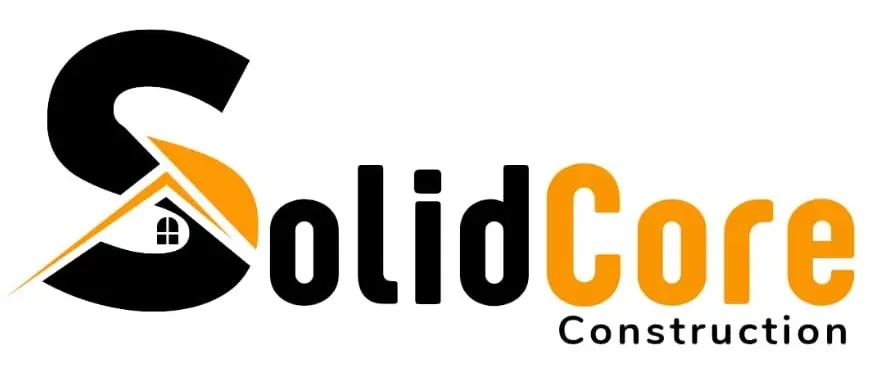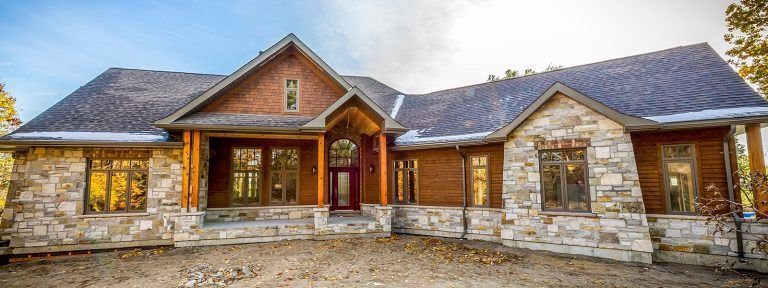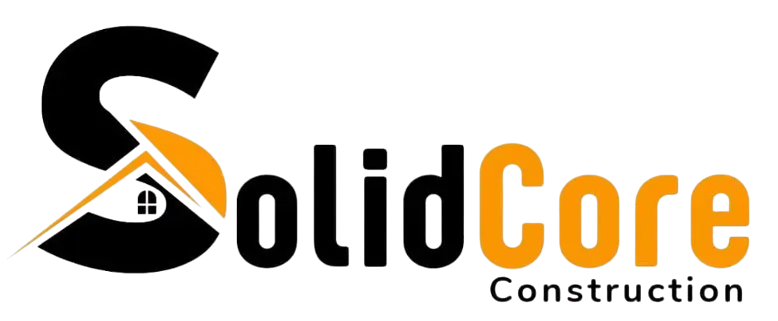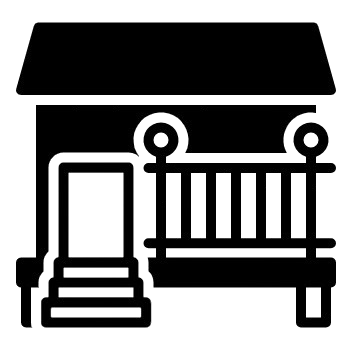Building your own home is one of the biggest choices you will ever make. Toronto is a good city for people who want to design and build a house that matches their lifestyle. But building a home is not only about bricks and paint. It also includes hidden costs like permits, design fees, land preparation, and finishing.
At Solid Core Construction, we understand how stressful construction and builds can be. This guide will explain every step of the cost clearly. Whether you need a handyman for small jobs or a full team for bigger projects, we are here to help.
Table of Contents
ToggleKey Factors That Change the Cost
Size and Design Complexity
The size of your house is one of the biggest cost drivers. A larger home needs more wood, steel, cement, and other materials. It also takes more time for workers like plumbers and electricians to finish the job. If you add special designs like curved walls, tall ceilings, or stylish roofs, the cost goes even higher. This is because such designs need skilled workers and more working hours. Simply put, the bigger and more complex the home, the more it will cost.Materials and Finishes
The type of materials you choose affects the budget. For example, vinyl flooring is cheaper, while hardwood or imported tiles are more costly. The same applies to cabinets: simple ones are affordable, but custom wood cabinets are expensive. Expensive materials last longer and increase the value of your home. Many people choose mid-range materials for a balance of price and quality. Solid Core Constructions can help you find the right materials for your home and budget.Labor and Contractor Fees
Labor in Toronto is costly because skilled workers are in high demand. Hiring an expert contractor helps you get good quality, avoid mistakes, and save time. But this comes at a higher cost. Hiring cheap labor might save money at first, but poor work can cause expensive work later. Skilled workers are an investment in safety and value. At Solid Core Construction, we make sure every job is done right the first time.Foundation and Structure
The foundation and framing are the base of your house. A simple concrete slab costs less, but if you want a basement or crawl space, you will pay more for digging and extra materials. Framing is also one of the most expensive parts because it supports the whole home. Using weak materials here can cause safety problems later. It’s better to spend more for a strong and safe foundation.Customization and Features
Adding extras like a swimming pool, home theater, or gym makes your house more comfortable but also more costly. These features need better materials, special equipment, and more work hours. They also increase the construction time. While customization improves your lifestyle, it quickly raises the budget. Many people first focus on basic features and then add luxury options later.
Key Cost Components
Land Acquisition
Buying land is the first big cost. In busy Toronto neighborhoods, land is very expensive and can take up a large part of your budget. Suburban areas are usually cheaper, but sometimes you may need extra money for preparing the land or adding services.
Architectural and Engineering Fees
These are the costs for making designs and technical plans. Architects and engineers prepare layouts, safety checks, and detailed drawings. Their fees are usually a percentage of the total construction cost, and they are important to avoid mistakes later.
Construction Costs
This includes both labor and materials. Skilled workers like electricians, plumbers, and carpenters charge higher fees, especially in Toronto. The type of materials you choose, from strong foundations to luxury finishes, also changes the budget. Using premium items makes the house more costly.
Permits and Fees
Before starting, you need government approval. Permits and inspections make sure your home follows building rules and safety laws. The cost depends on the area, rules, and how complex the project is. Without permits, your work may be stopped.
Utilities and Infrastructure
Connecting your home to water, gas, sewer, and electricity adds extra costs. These services are necessary for comfortable living and must be installed before you move in.
Landscaping and Exterior Finishes
Making the outside of your home look good also costs money. Gardens, driveways, walkways, and outdoor lights improve appearance and value but add to the budget.
Interior Design and Finishes
The inside of the house needs flooring, cabinets, countertops, lighting, and bathroom fittings. Interior design choices have a big impact on cost, as luxury finishes are much more expensive than standard ones.
Hard Costs vs Soft Costs
Hard Costs
These are the physical things you can see in your house. For example, walls, floors, roof, plumbing, and electrical systems. They are the parts that make up the actual structure and design of your home.
Soft Costs
These are the behind-the-scenes expenses that help make your home project possible. They include permits, architect fees, legal paperwork, insurance, and project management. You don’t see them in the house, but they are very important for the project.
Main Steps in Building a Custom Home
Set Your Budget
Before starting, decide how much money you can spend on your home. Include costs for building, permits, and finishing. It’s smart to keep an extra 10–15% for hidden or surprise costs. A clear budget keeps you safe from overspending.Purchase the Land
Choose land that fits your needs and lifestyle. Land in the center of Toronto is very expensive, while land outside the city is cheaper. Location affects your daily life and your total budget. Think about both price and convenience before buying.Choose the Construction Method
You can build in two main ways: traditional or modular. Traditional builds give more freedom in design but take more time. Modular homes are faster and cheaper, but design options are limited. Pick the method that matches your budget and style.Create the Plans and Designs
Work with architects to prepare detailed home plans. Good planning helps avoid costly changes during building. A clear design makes construction faster and smoother. This step saves both money and time later.Apply for Permits
Before building, you must get approval from the city. Permits make sure your home is safe and legal. If you skip this step, work can be stopped, and you may face fines. Always secure permits before construction begins.Start Construction
This step includes preparing the land, laying the foundation, and building the structure. After that, roofing, plumbing, wiring, and interior finishing are done. Careful checking at each stage ensures safety and quality. Skilled workers are very important here.Final Inspection and Occupancy
Once the building is finished, city inspectors check the home. They make sure everything is safe and follows the rules. After approval, you get a certificate that allows you to move in legally. This step completes your home project.
What Affects the Cost of Building a New Home in Toronto?
Size of the Home
A bigger house needs more bricks, cement, wood, and time to build. This makes the cost go higher compared to a smaller house.
Materials
The type of materials you choose changes the budget. Simple tiles and cabinets are cheaper, but luxury or imported ones are expensive.Labor
Skilled workers like electricians, plumbers, and carpenters cost more. The more work and skill needed, the more you will pay.Design
Simple designs are cheaper. If you add stylish roofs, curved walls, or big windows, the cost goes up because they need extra work and planning.Extra Features
Things like swimming pools, gyms, or home theaters are not basic needs. They add comfort but also make the house much more expensive.
The location of the land also matters because land in the city is more expensive than in the suburbs. In short, every detail from design to finishing affects the final cost.
Other Expenses to Think About
Appliances
Things like fridge, oven, washing machine, and other home equipment. These are needed right away when you move in, so they add to your budget.
Landscaping
This includes gardens, lawns, fences, or driveways. A nice outdoor area makes your home look better, but it can also cost a lot depending on the design.
Temporary Utilities
During construction, you may need temporary water, power, or waste removal. These are short-term costs, but they are necessary to keep work going smoothly.
Luxury Add-ons
Extra features like a swimming pool, home theater, or elevator. These are not necessary but add comfort and style. They make the house more expensive and take more time to build.
FAQs
Q1. What is the most expensive part of building?
Framing and structure cost the most because they support the whole house and need skilled labor.
Q2. What’s the most cost-effective way to build a custom home?
Choosing a simple design and standard materials is the cheapest way. Avoiding luxury features and planning carefully also saves money.
Q3. What shape house is the cheapest to build?
A square or rectangle-shaped home is usually the cheapest because it needs fewer materials and is easier to build.
Q4. How can I lower costs?
Choose simple designs, use standard finishes, and avoid extra luxuries. Solid Core Construction can also help you save money with smart renovations.
Q5. How long does it take to build?
Most homes take 10–18 months. Big or complex homes may take up to 2 years.
Q6. What hidden costs should I expect?
Soil tests, permits, landscaping, and utility connections. Always keep 10-15% extra money ready.
Q7. Is it cheaper to build or buy?
Building gives you full control but is more costly upfront. Buying may save money, but you might need renovations which Solid Core Construction can do for you.
Final Thoughts
Building a custom home in Toronto is exciting but also costly. The total cost depends on your choices for size, design, and materials. By planning ahead and understanding every step, you can control your budget and avoid surprises.
At Solid Core Construction, we provide trusted handyman and renovation services in Toronto. Whether you need help with small builds or big home projects, our expert team is ready to deliver quality work.
















